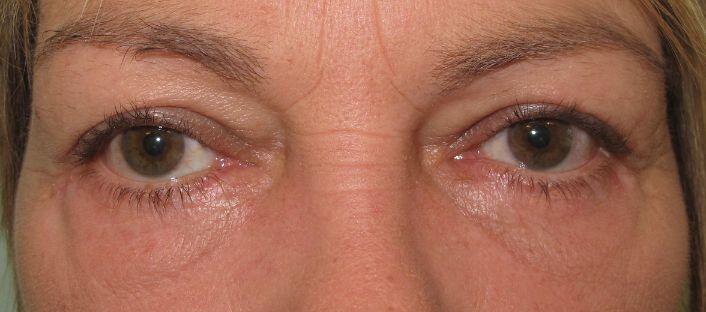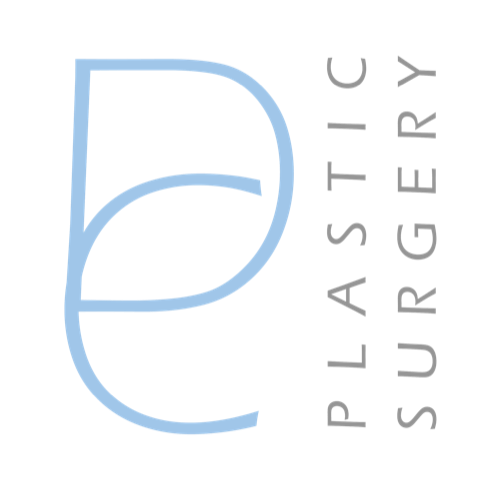Eyelid Reduction
As part of normal facial ageing, eyelids can develop excess skin and fat bulges.
Upper eyelids tend to develop a hooded appearance. Lower eyelid bags may develop as skin becomes lax and fat bulges out. The cosmetic appearance of the eyelids can have a marked effect on facial ageing.
Eyelid reduction surgery, also known as blepharoplasty, is a popular operation designed to tighten the skin of the eyelids. It involves removing excess skin and, when required, fat from the eyelids. Surgery can be performed to upper and/or lower eyelids with the ultimate aim making the face look younger and brighter.
Why do patients seek blepharoplasty surgery?
Patients who seek this operation are usually self-conscious of the appearance of eyelids and frequently complain that they look tired. Some patients complain of difficulty applying eye make-up as a result of hooded skin in the upper eyelids. Occasionally upper eyelid skin can be so excessive that it can encroach into the vision.
What will happen during the consultation?
Mr Chester will perform a detailed assessment to determine your suitability for surgery. This process will include finding out specifically what you do not like about your eyelids. He will also ask about conditions that can increase risks of surgery. He will perform a thorough examination to asses the degree of skin excess, fat bulging and the contribution that your brow (lower forehead) makes to your problem.
How long will I be in hospital?
Patients come in on the day of surgery. Those having upper eyelid surgery usually go home the same day. Patients having lower eyelid blepharoplasty (or upper and lower eyelid surgery at the same time) normally stay in hospital for one night after the operation.
What type of anaesthetic is required?
Mr Chester normally performs upper eyelid surgery under local anaesthetic (numbing injections only). Lower eyelid surgery (including when upper and lower eyelid surgery are performed together) is usually performed under general anaesthetic (put to sleep).
What happens during the operation?
On the day of the operation, Mr Chester draws markings to guide skin removal during surgery. These markings are performed with the eyes open and closed to optimise skin removal. Surgery is planned so that scars generally follow natural skin creases and hence usually settle very well. With lower eyelid surgery in particular, small amounts of fat can be removed to reduce eyebags and the eyelids are tightened using a procedure called canthopexy. Surgical wounds are stitched closed and supported by adhesive tapes (SteristripsTM). The stitch ends are left long and taped in place to avoid them irritating the eyes. Eye ointment is inserted to keep the eyes moist.
What is the recovery period following surgery?
Pain is usually mild after blepharoplasty and many patients only require Paracetamol, particularly following upper eyelid surgery. Eye ointment is provided for the first 7 days. The majority of swelling and bruising usually settles in the first 2 weeks. Some degree of swelling may occur until around 6 weeks. Most patients can return to work after 2 weeks. Some patients can return sooner but bruising may prevent this. Mr Chester advises that patients should wear large sunglasses to protect the eyes when outside for 3 weeks after surgery. It is important to note that the longer term effects of blepharoplasty can be adversely affected by smoking, alcohol intake, sun exposure and sleep deprivation.
What follow-up appointments will I need?
Mr Chester’s normal practice is for patients to be seen for stitch removal at 7 days. Mr Chester frequently sees patients himself at this point to assess healing.
Thereafter appointments are dictated by the rate of recovery but normally he will see you at 6 weeks for a scar check.
Thereafter appointments are dictated by the rate of recovery but normally he will see you at 6 weeks for a scar check.
Prices
Fixed price packages from
Upper blepharoplasty (local anaesthetic) £3283
Lower blepharoplasty (general anaesthetic) £POA
Upper and lower blepharoplasty (general anaesthetic)£POA
Patient photographs
Patient 1
67-year-old lady with hooding of upper eyelids. Upper eyelid blepharoplasty performed. Skin removal only under local anaesthetic as an outpatient procedure. Post-operative photographs taken at 7 weeks. Scars will gradually fade over the next 6-12 months
Before surgery

After surgery

Patient 2
37-year-old lady with excess skin of upper eyelids. Upper eyelid blepharoplasty performed under local anaesthetic as an outpatient procedure. Only skin removed. Post-operative photographs taken at 6 weeks.
Before surgery
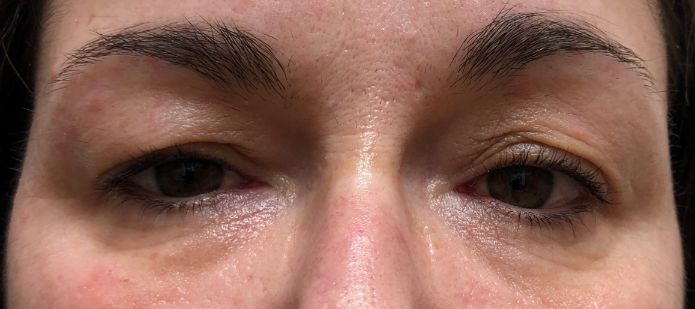
After surgery
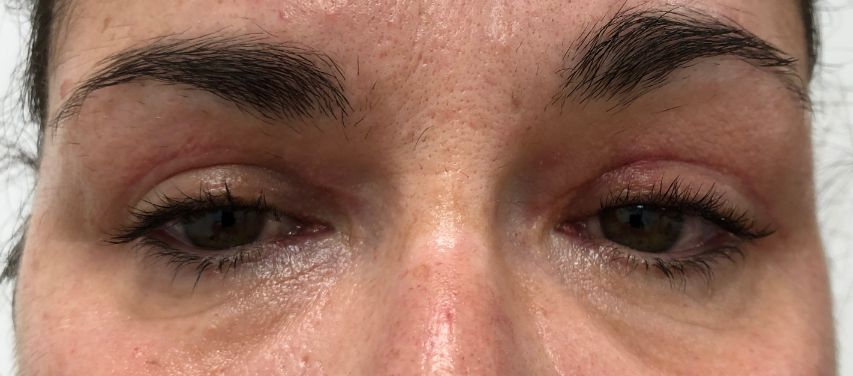
Patient 3
50-year-old lady requesting correction of lower eyelids. Excess skin and eyebags (festoons)present. Lower blepharoplasty performed with removal of excess skin and muscle under general anaesthetic. Eyelid tightened by canthopexy and muscle hitch. Post-operative appearance at 4 months shown.
Before surgery
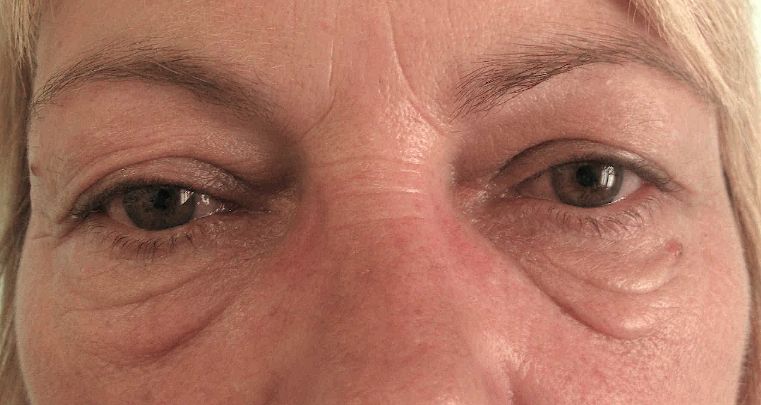
After surgery
